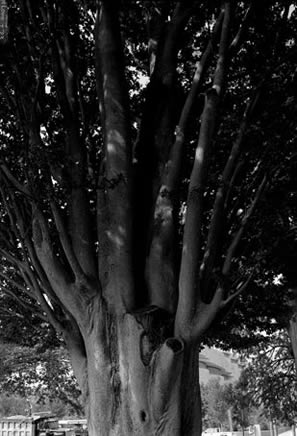
Washington, D.C.
Elms of the National Mall
Courtesy National Park Service
history (Botanic Garden “Elm”) continued
The Botanic Garden “Elm,” was not moved, and remains in its original location to this day. Unlike the other zelkovas, this tree is an elm zelkova, an extremely rare species in America, especially during the years the Botanic Garden was located on the National Mall. Trees of the genus Zelkova are closely related to elms, similar in size, and exhibit comparable vase-like branching habits, but do not suffer from Dutch elm disease, which has devastated the American elm population. While sometimes planted as elm replacements, they remain relatively rare. The location of the Botanic Garden “Elm” to the extreme southwest of Union Square as well as its massive size, likely led Olmsted to retain it in place. This remote location also saved the tree in 1971, as it was preserved in the square’s southwest grass panel, and not destroyed when the reflecting pool was installed at the center of the site.
Today, the Botanic Garden “Elm” stands approximately 70 feet tall and has a girth of 54 inches at breast height. Given the severe alterations experienced by Union Square, any plantings dating back to the Botanic Garden are extremely rare; rarer still are the few trees that have remained in one location. The Botanic Garden “Elm” not only dates to this time period and has remained in place, but it is also rare, botanically speaking. As such, it is one of the most historically significant trees on the National Mall.